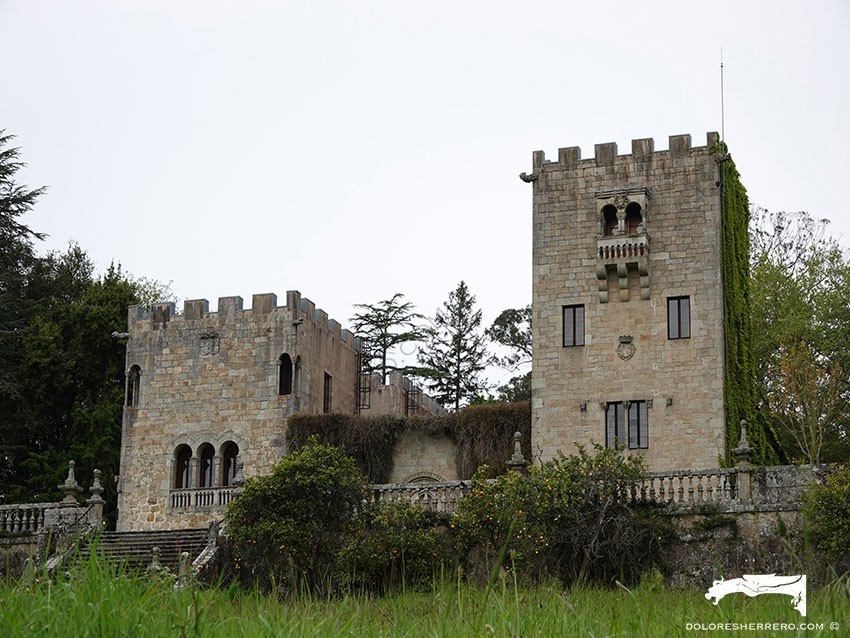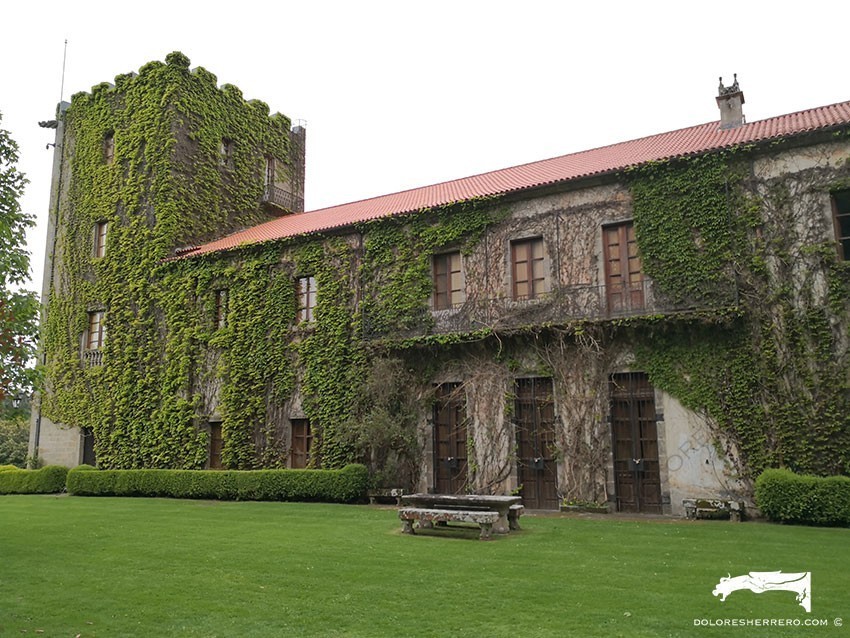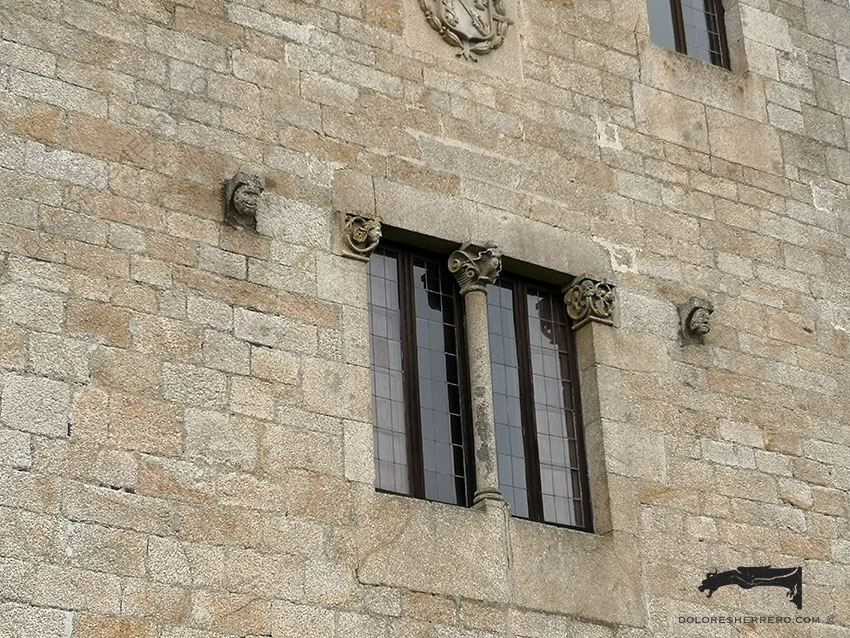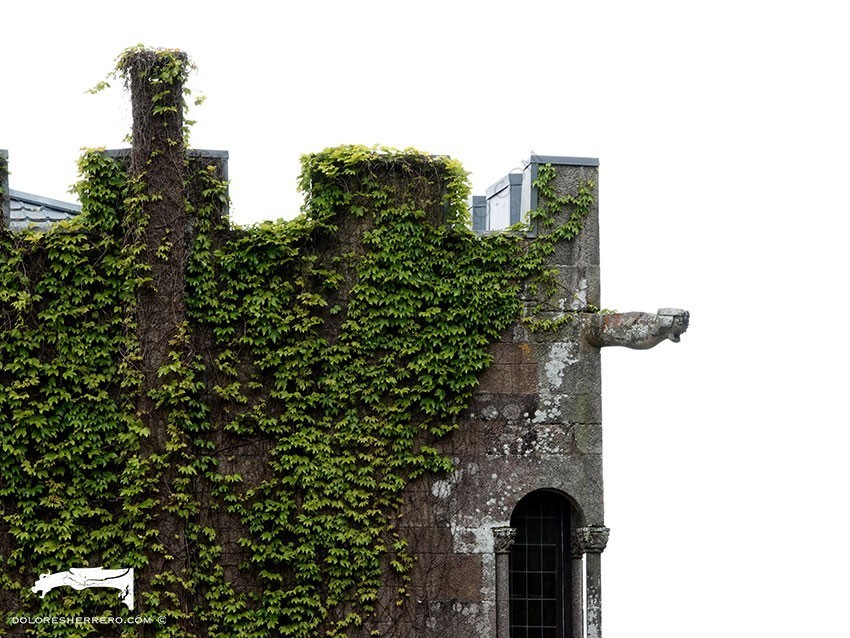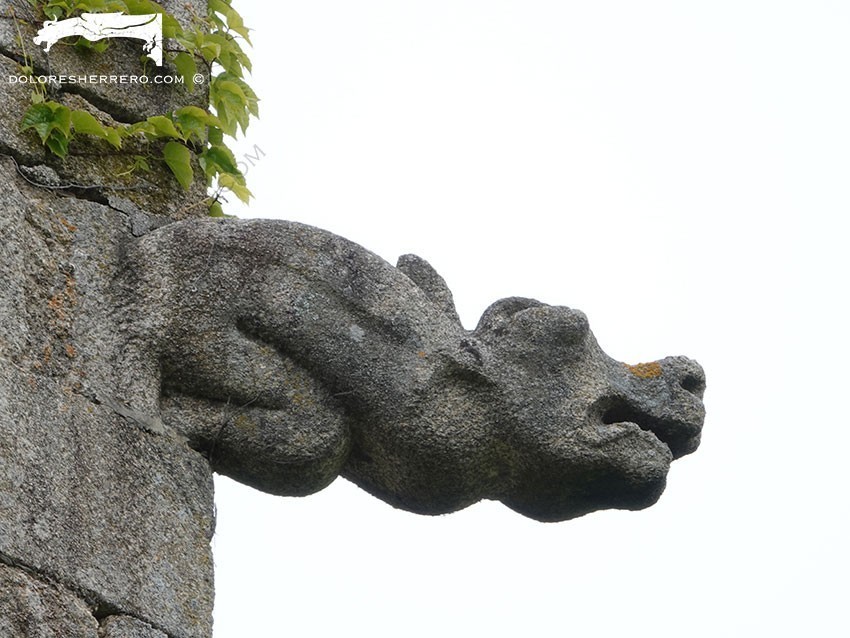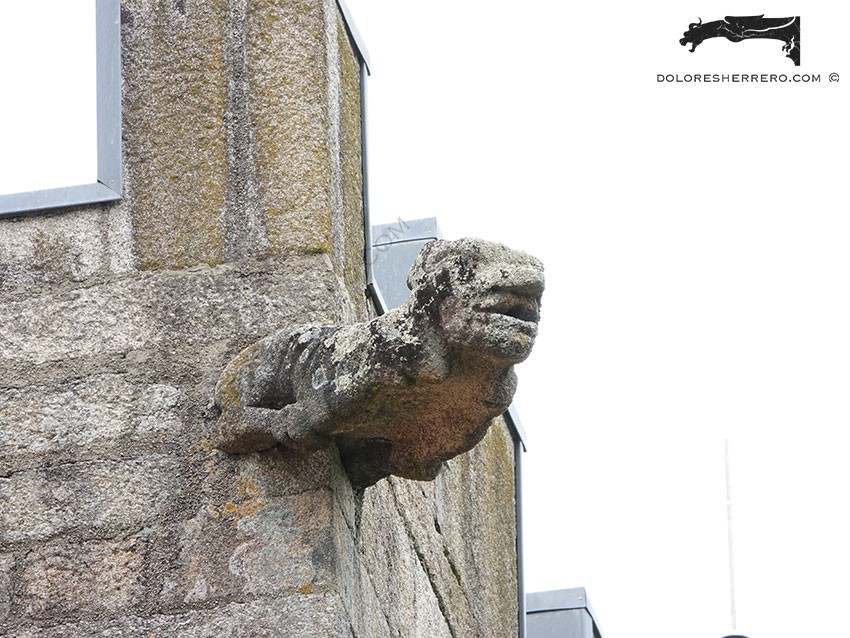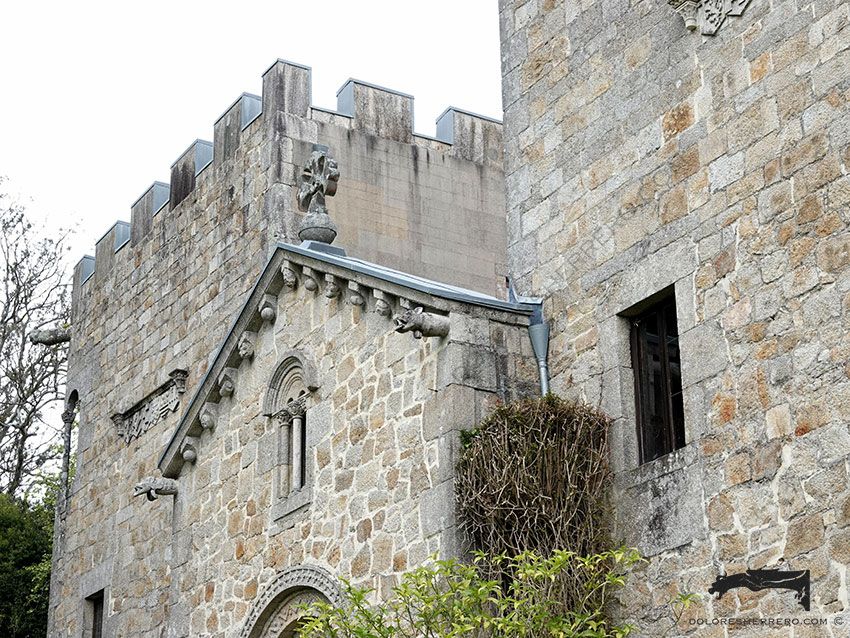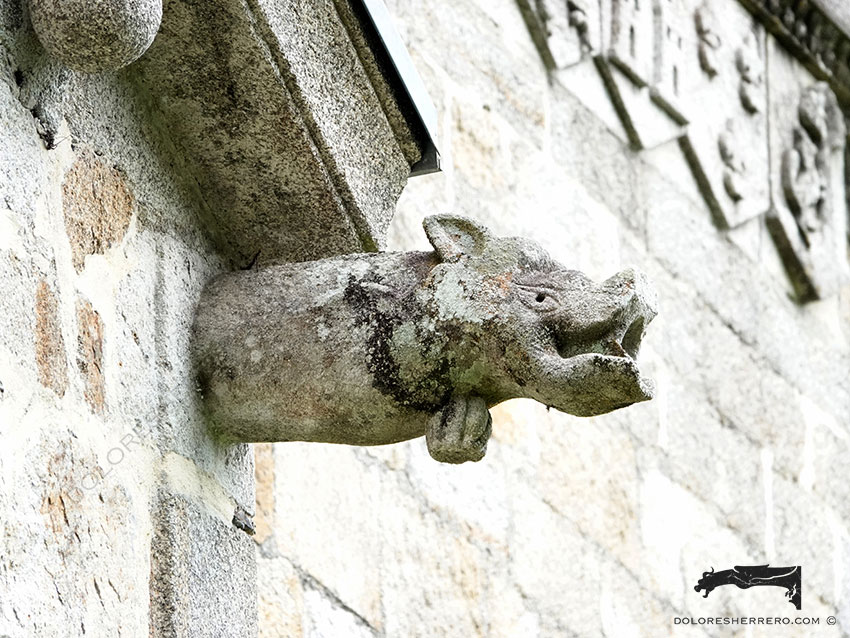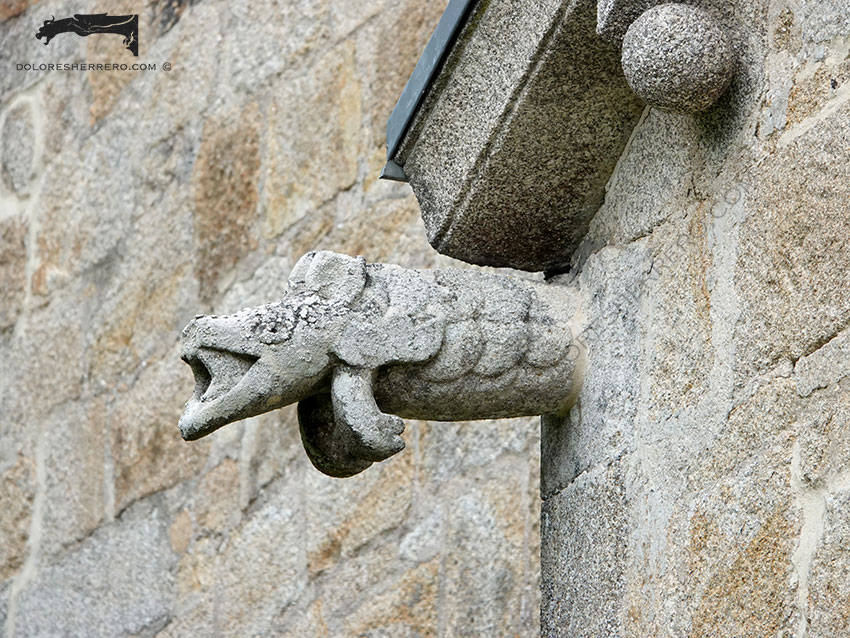Today we are going to discover a number of unique and little-known gargoyles. We are referring, no less, to the gargoyles located in the Torres de Meirás, a magnificent construction also known as Pazo de Meirás, in Sada, a town in the province of A Coruña (Spain).
The great writer Emilia Pardo Bazán, who lived there for long periods of time, had the towers built between 1894 and 1910.
In 1938, the authorities of A Coruña decided to donate the pazo (traditional Galician manor house) to Franco and, in 1941, it was handed over to him as Head of State, and he made it his summer residence. On his death, it was inherited by his family. In 2020, a court ruling declared the personal donation to Franco and his family to be legally invalid and ruled that the pazo is State property.
The gargoyles of this stately residence are framed within the medieval aesthetic, with reliefs and decoration with a literary, fantastic and even romantic touch, revealing the tastes and personality of such a distinguished writer.
The fantastic and enchanting gargoyles
The eight gargoyles are almost all of a fantastic nature, some of them being very similar to several gargoyles of the San Martín Pinario Monastery in Santiago de Compostela (Spain), with that Galician magic one finds in this wonderful land.
The first two that we are showing you look like dogs. However, one of them has anthropomorphic features.
The next one is a fish with ears, which typology we have already seen in San Martín Pinario and in other places, such as the Monastery of Batalha (Portugal). In most of these examples, the sculptor likely attempted to carve the fins of the fish, but some truly appear to have ears.
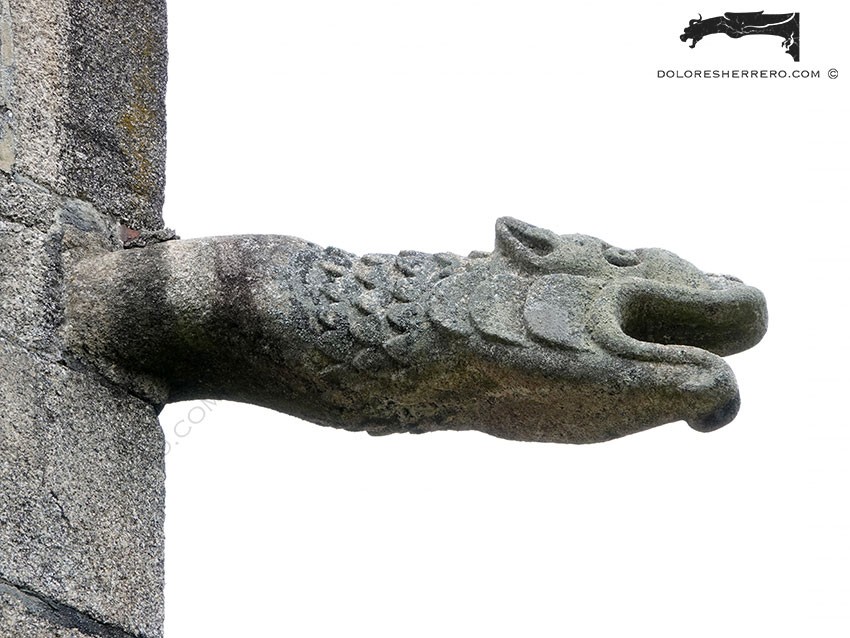
A long spout ending in a bird’s’ head protrudes from one of the corners of one of the towers.
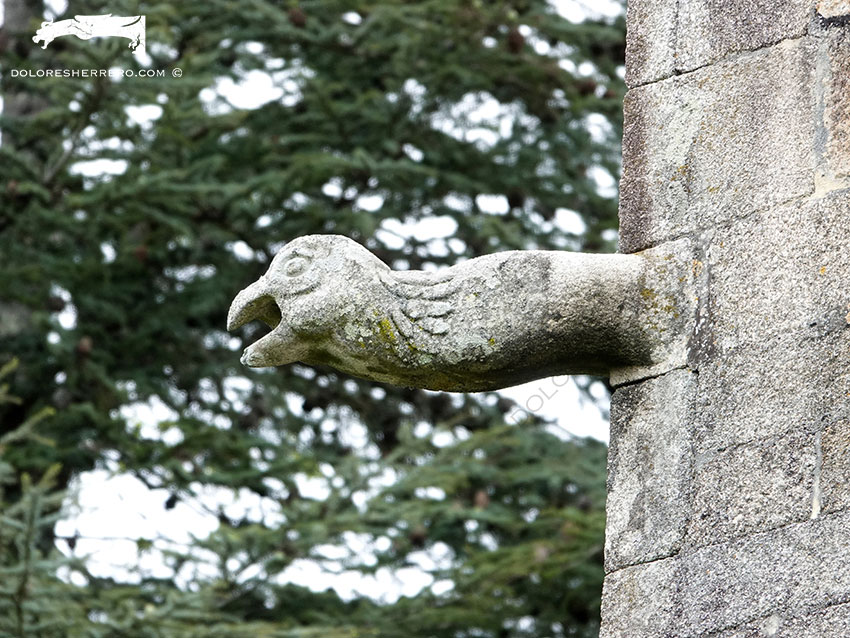
Another spout with a human head and medieval headdress adorns another of the corners.
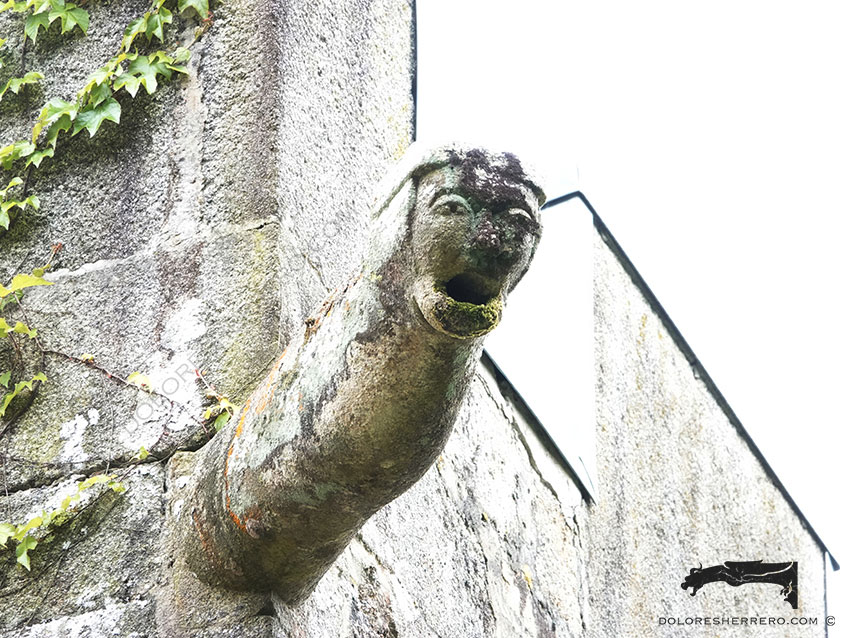
The next is a geometric, cylindrical gargoyle with a moulding at the mouth.
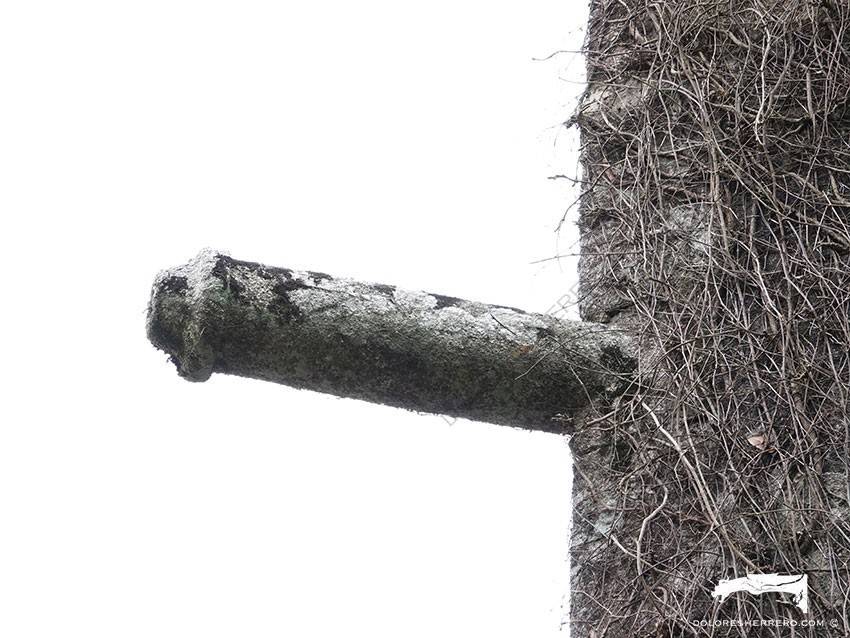
On the outside of the chapel, we can see two very curious gargoyles. A spout with a pig’s head, and a small animal monster with scales, ears and legs, resembling a fish.
When we went to the pazo, the first sensation we had was that of being in another world. In this land of legends, tales and fantastic gargoyles, we sometimes discover unique and magical places like this one. Places that are the product of the creativity of great artists and, in this case, of the sublime and prodigious imagination of our great Emilia Pardo Bazán.
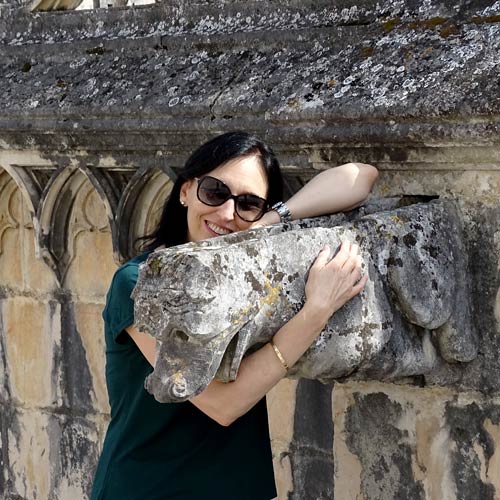
Doctor of Art History and researcher specializing in the study of gargoyles.
I am Dolores Herrero Ferrio, and my thesis, “An Approach to the Study of Gargoyles of Gothic Cathedrals in Castilla and León”, is dedicated to the study of these fascinating figures.
If you like gargoyles and art history, you will also enjoy my book, “The Gargoyle and Its Iconography,” a book I have written with great care for those interested in the world of gargoyles.
I have created my own Encyclopedia of Gargoyles, a Gargopedia to share with you, where you will discover all the secrets and wonders of these enigmatic sculptures.
I hope you enjoy this Gargopedia as much as I have enjoyed creating it, and remember that each gargoyle has a story to tell, and here you will discover them all.
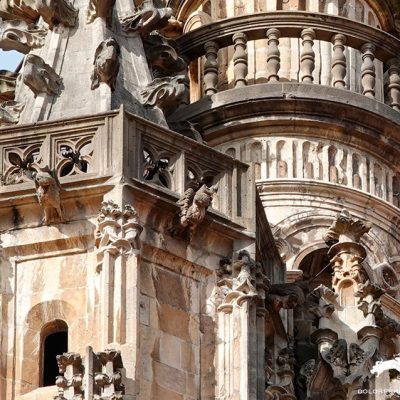 The Gargoyles of Oviedo Cathedral in Spain: Guardians of an Asturian Treasure
The Gargoyles of Oviedo Cathedral in Spain: Guardians of an Asturian Treasure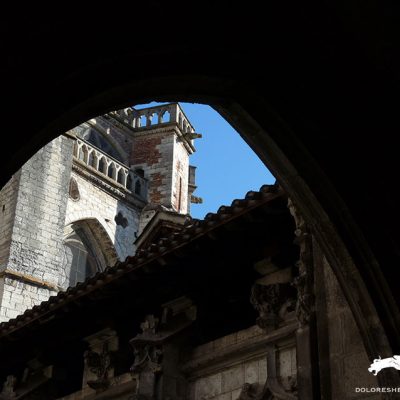 Gargoyles of Cahors Cathedral, France: Moss-Covered and Evocative
Gargoyles of Cahors Cathedral, France: Moss-Covered and Evocative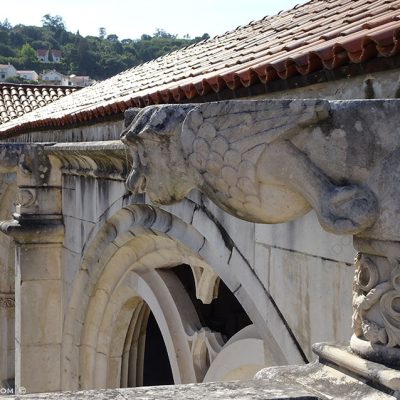 The Gargoyles of the Monastery of Alcobaça: Stone Art in Portugal
The Gargoyles of the Monastery of Alcobaça: Stone Art in Portugal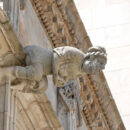 The ‘Chimera Gargoyles’ of the Patio de los Naranjos: Fantastic Creatures in the Palau de la Generalitat in Barcelona
The ‘Chimera Gargoyles’ of the Patio de los Naranjos: Fantastic Creatures in the Palau de la Generalitat in Barcelona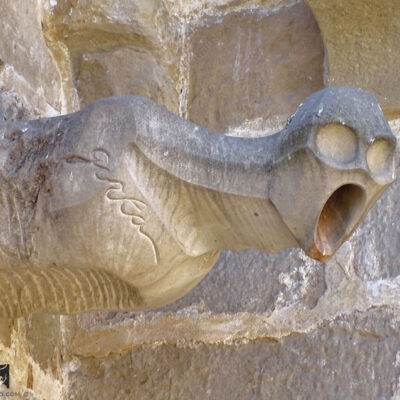 Gargoyles of the Church of Santa María la Mayor in Valderrobres (Teruel, Spain)
Gargoyles of the Church of Santa María la Mayor in Valderrobres (Teruel, Spain)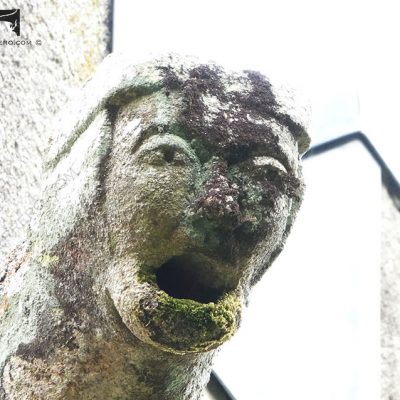 Las esquivas gárgolas de las Torres de Meirás
Las esquivas gárgolas de las Torres de Meirás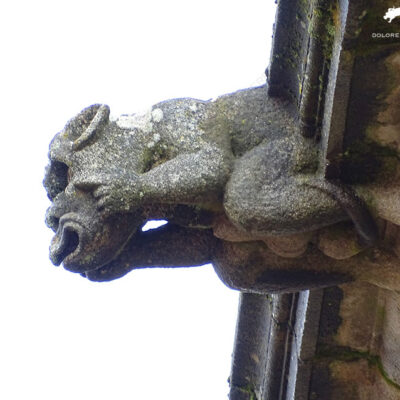 The Gargoyles of Santiago de Compostela and their Fantastic Iconography: Part Two
The Gargoyles of Santiago de Compostela and their Fantastic Iconography: Part Two Las gárgolas de Santiago de Compostela y su fantástica iconografía: Parte II
Las gárgolas de Santiago de Compostela y su fantástica iconografía: Parte II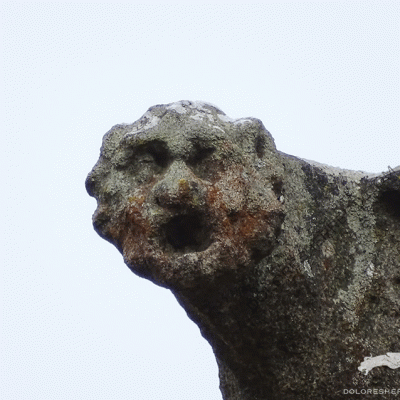 Gárgolas de Compostela: Guardianes y monstruos en su arquitectura
Gárgolas de Compostela: Guardianes y monstruos en su arquitectura